Bio-degradable cards
Every card imaginable!
|
Bio-degradable cards Every card imaginable! Assistance Dogs for Children: What Parents Need to KnowBecoming a parent is an incredible journey, often filled with joys, challenges, and countless questions. When your child has additional needs, those questions can multiply, and finding the right support becomes a priority. You might have heard about assistance dogs and wondered if one could be a helpful companion for your child. It's a significant consideration, and it’s completely natural to feel a mix of hope, curiosity, and perhaps a little overwhelm about where to start. This guide is here to walk you through everything you need to know about assistance dogs for children. We'll explore what these amazing dogs do, the benefits they can bring, how to begin the process, and what life with an assistance dog really looks like. Our aim is to provide you with clear, empathetic, and comprehensive information so you feel confident and well-informed every step of the way. Table of Contents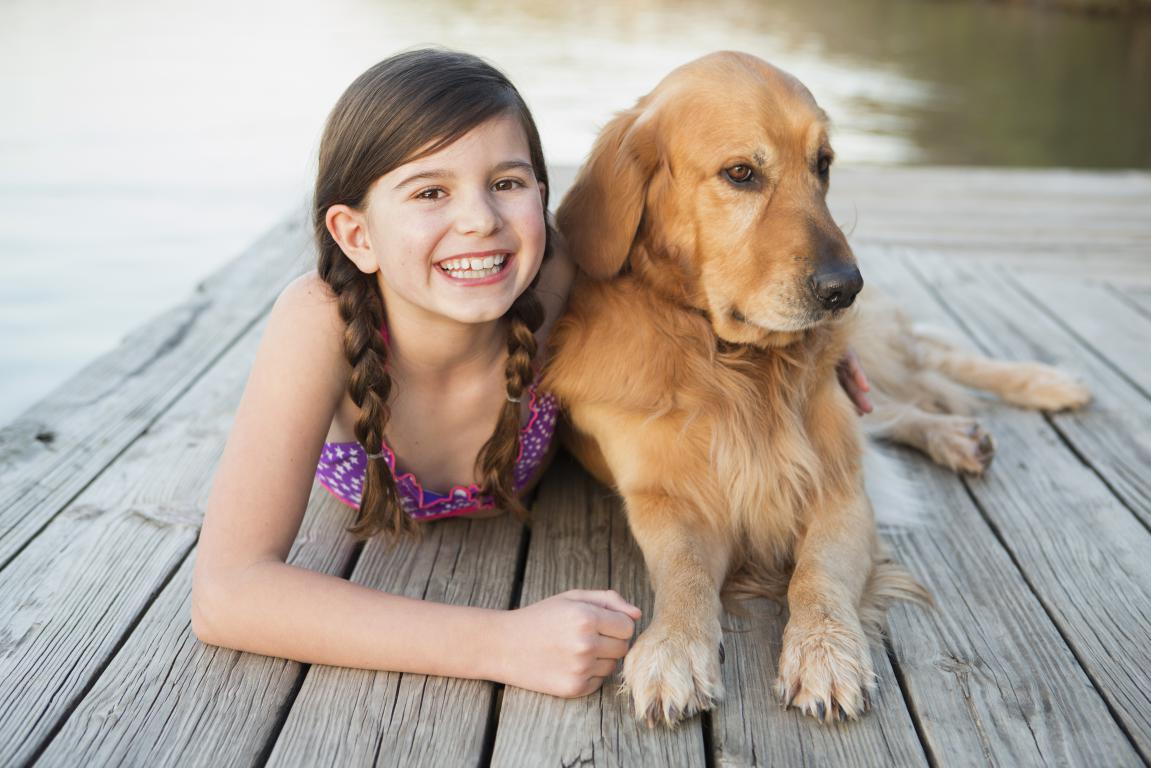
What Exactly is an Assistance Dog for a Child?When we talk about an assistance dog for a child, we're referring to a specially trained dog that performs tasks to mitigate their owner's disability. These aren't just pets; they are working animals, dedicated to supporting a child's specific needs, enhancing their independence, and improving their quality of life. The bond formed between a child and their assistance dog is often profound, offering not just practical help but also emotional comfort and companionship. It’s important to understand that an assistance dog for a child is different from a family pet in several key ways. While pets bring immense joy and can certainly be therapeutic, an assistance dog undergoes rigorous, specialised training to perform specific tasks. This training allows them to carry out actions that a pet wouldn't typically do, directly supporting the child's disability. For example, a pet might comfort a child during a moment of anxiety, but an assistance dog could be trained to apply deep pressure therapy, interrupt repetitive behaviours, or even fetch medication. These dogs are carefully selected for their temperament, intelligence, and willingness to work. Not every dog is suited to be an assistance dog, even within breeds known for their calm nature. Organisations that provide assistance dogs for children spend a great deal of time evaluating puppies and young dogs to ensure they have the right foundation for this important role. Their training is extensive, often lasting up to two years, and covers a wide range of skills, from basic obedience to highly specialised tasks tailored to an individual child's needs. The concept of an assistance dog isn't new, but their role in supporting children has grown significantly as our understanding of various conditions and the human-animal bond has deepened. They are recognised under the Equality Act 2010 in the UK, granting them public access rights that typical pets do not have. This means an assistance dog can accompany a child into most public places, helping them navigate daily life with greater ease and confidence. Ultimately, an assistance dog for a child is a partner, a helper, and a friend. They are a constant presence, offering practical aid, emotional stability, and a bridge to greater independence and participation in the world. Their purpose is to empower children, helping them overcome barriers and live fuller, more engaged lives. 
How Can an Assistance Dog Help My Child?The ways an assistance dog can help a child are incredibly diverse and often life-changing. Beyond the immediate practical support, these dogs bring a wealth of benefits that touch every aspect of a child's development and family life. It's not just about what the dog does, but also about the profound impact their presence has. Practical Support and Daily TasksFrom a practical perspective, assistance dogs are trained to perform a multitude of tasks tailored to a child's specific needs. For a child with mobility challenges, a dog might be trained to retrieve dropped items, open and close doors, or even help steady them while walking. Imagine the boost in confidence for a child who can independently pick up a dropped toy or access a room simply because their dog is there to help. For children who use wheelchairs, dogs can be trained to pull the chair short distances, press accessible pedestrian crossing buttons, or carry small bags. For children with conditions like autism, the support can be equally transformative. An assistance dog might be trained to interrupt repetitive or self-harming behaviours, provide a calming presence during meltdowns, or act as a safe anchor to prevent bolting in public spaces. This last point is particularly impactful for parents, as it can significantly reduce anxiety about safety when out and about, allowing for more family outings and greater participation in community life. The dog can wear a special harness that the child holds onto, providing a physical and emotional tether. Emotional Well-being and CompanionshipBeyond these specific tasks, the emotional and developmental benefits are immense. An assistance dog can become a child's best friend and confidant, offering unconditional love and a non-judgmental presence. This bond can help reduce feelings of loneliness and isolation, which can sometimes accompany disabilities. The dog provides a consistent source of comfort, especially during times of stress or anxiety. Just petting a dog has been shown to lower blood pressure and heart rate, and for a child, this regular interaction can be a powerful self-soothing mechanism. Boosting Confidence and Social SkillsThe presence of an assistance dog can also significantly boost a child's self-esteem and confidence. Having a loyal companion who is always there, ready to help, can make a child feel more capable and independent. They become more engaged with the world around them, often feeling more comfortable participating in social situations as their dog can act as a natural conversation starter, helping to break down social barriers. Other children and adults are often curious about the dog, which can create opportunities for positive interactions. Family-Wide BenefitsFor the whole family, an assistance dog can bring a sense of relief and improved quality of life. Parents often report reduced stress and anxiety, knowing their child has an additional layer of support and safety. The dog can help to create a more harmonious home environment by easing tension and providing a focus for positive interaction. In some cases, the dog's presence can even lead to better sleep patterns for a child, as the dog might be trained to alert parents to night-time anxieties or simply provide a comforting presence in the bedroom. Encouraging Responsibility and ActivityAn assistance dog encourages responsibility and routine. While parents will always have the primary responsibility for the dog's care, children can be involved in age-appropriate ways, such as helping with feeding or grooming. This fosters a sense of purpose and teaches valuable life skills. Moreover, the dog promotes physical activity, as regular walks and playtime are essential. For some children, this structured physical activity can be particularly beneficial, helping with sensory regulation or simply encouraging them to be more active outdoors. In essence, an assistance dog for a child isn't just a tool; it's a catalyst for growth, independence, and happiness. They bridge gaps, build confidence, and bring a unique form of love and support that can transform a child's life and the lives of their family. 
Conditions That Might Benefit from an Assistance DogAssistance dogs are incredibly versatile, and their ability to be specifically trained means they can support children with a wide range of physical, sensory, cognitive, and developmental conditions. It's not about finding a dog for a diagnosis, but rather identifying how a dog's specific tasks and presence can mitigate the challenges a child faces due to their condition. Autism Spectrum Disorder (ASD)One of the most widely recognised areas where assistance dogs help children is with autism spectrum disorder (ASD). For children with autism, dogs can offer invaluable support. They can be trained to act as a tether, preventing a child from bolting or wandering off in public places, which can be a huge safety concern for parents. During moments of sensory overload or meltdowns, the dog can provide deep pressure therapy by lying across the child's lap or body, offering a calming influence. They can also interrupt repetitive behaviours or provide a consistent, non-judgmental presence that helps reduce anxiety and improve social interaction. The predictable routine associated with caring for a dog can also be very grounding for children with autism. Mobility ImpairmentsChildren with mobility impairments can also benefit immensely. This includes conditions such as cerebral palsy, muscular dystrophy, spina bifida, or those who use wheelchairs. For these children, an assistance dog can be trained to perform physical tasks like retrieving dropped items (e.g., a phone, a dropped pencil, a remote control), opening and closing doors, turning lights on and off, or even helping with balance and stability while walking. They can also carry small items in a specially designed backpack, reducing the burden on the child or caregiver. The independence gained from having a dog perform these tasks can significantly improve a child's participation in daily activities and reduce reliance on others. Epilepsy and Seizure DisordersFor children with epilepsy or seizure disorders, a specially trained seizure alert or response dog can be life-changing. While very few dogs can reliably predict seizures, some have an innate ability to sense an oncoming seizure and alert a parent or caregiver. More commonly, seizure response dogs are trained to perform tasks during or after a seizure. This could include barking to alert a parent, lying next to the child to prevent injury, bringing a phone or medication, or pressing an emergency alert button. This provides an incredible sense of security for both the child and their family, knowing there's an additional layer of protection and support. Type 1 DiabetesChildren with type 1 diabetes can also be paired with medical alert dogs. These dogs are trained to detect changes in blood sugar levels by scent. They can alert a child or parent to dangerously high or low glucose levels, often before continuous glucose monitors or the child themselves would recognise the symptoms. This early warning can prevent serious medical emergencies and allows for timely intervention, such as administering insulin or glucose. The dog can be trained to nudge, paw, or fetch a testing kit when they detect a change, providing a crucial safety net throughout the day and night. Other Beneficial Conditions that an Assistance Dog Can HelpOther conditions that can be supported by assistance dogs include:
It is crucial to remember that suitability is determined by the child's individual needs and how those needs align with what an assistance dog can realistically be trained to do. Each child's situation is unique, and assistance dog organisations carefully assess both the child's needs and the family's capacity to care for a working dog before placement. The goal is always to find the perfect partnership that genuinely enhances the child's life. 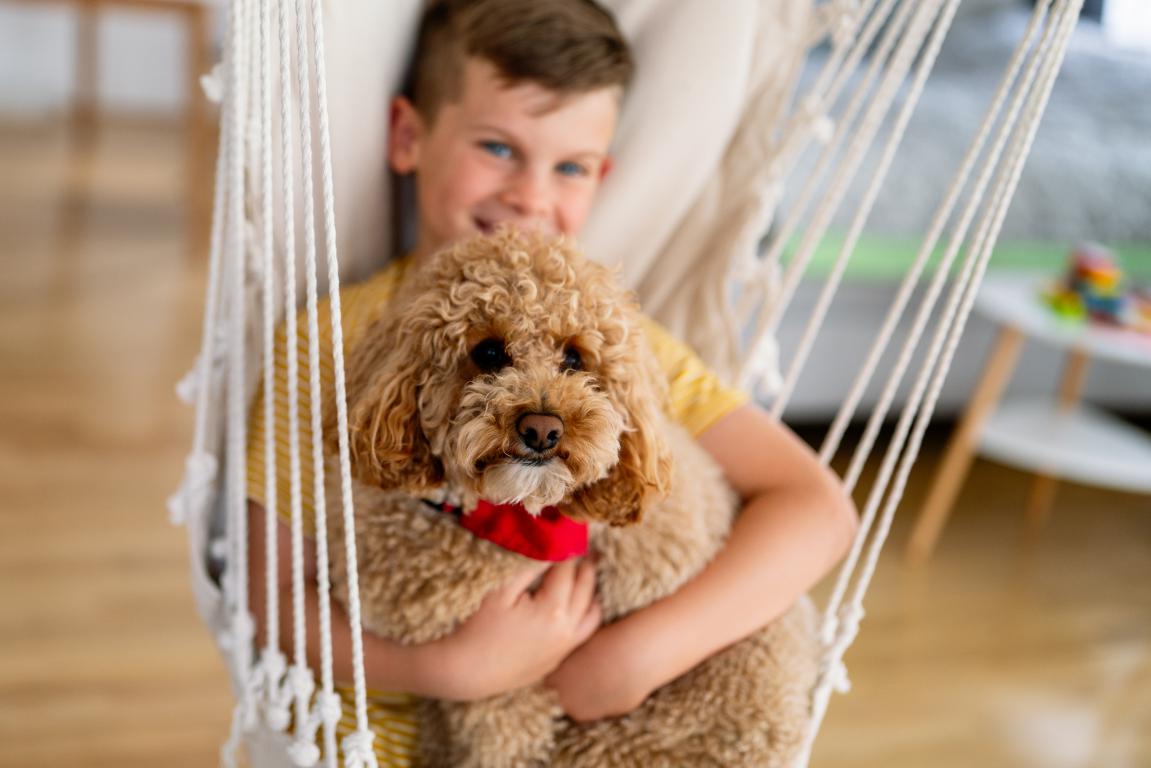
Getting an Assistance Dog for Your ChildEmbarking on the journey to get an assistance dog for your child is a significant undertaking, and it’s helpful to understand the steps involved right from the start. It’s a thorough process designed to ensure the best possible match between a child, their family, and a highly trained dog. While specific details might vary slightly between organisations, the general pathway usually follows a similar structure. Initial Research and ContactThe very first step is research and initial contact with assistance dog organisations. In the UK, there are several reputable charities that train and provide assistance dogs for children. Some focus on specific conditions, while others have broader remits. It's worth exploring the websites of organisations like Dogs for Good, Canine Partners, Guide Dogs, Hearing Dogs for Deaf People, and Medical Detection Dogs. Look at their eligibility criteria, the types of dogs they train, and the conditions they support. Once you've identified a few that seem like a good fit, the next step is to make initial contact, usually through an online enquiry form or a phone call. This is where you can ask preliminary questions and request an application pack. The Application StageUpon receiving your application pack, you'll enter the application stage. This is typically a detailed form that asks for comprehensive information about your child's condition, their specific needs, how an assistance dog might help, and details about your family’s living situation. You'll likely need to provide medical reports, letters from specialists (such as paediatricians, occupational therapists, or neurologists), and possibly educational psychology reports. The purpose of this stage is for the organisation to gain a full understanding of your child's challenges and to assess if an assistance dog is a suitable intervention. They are looking for how the dog can genuinely mitigate the effects of the disability and enhance the child’s independence and safety. The Assessment StageFollowing a successful application, you'll move to the assessment stage. This is a crucial part of the process and often involves several components. There might be an initial phone interview to clarify details from your application. This will usually be followed by a home visit from a representative of the assistance dog organisation. This visit is incredibly important as it allows them to see your family dynamic, your home environment, and how your child interacts in their natural setting. They will want to understand the daily routines, potential hazards, and the level of support available within the family. This isn't an interrogation; it's a chance for them to gather a holistic picture and ensure that both your home and lifestyle are suitable for a working dog. They will be looking for things like secure garden access, proximity to suitable walking areas, and the general calm of the household. During the home visit, or sometimes as a separate appointment, there will likely be an individual assessment with your child. This is designed to observe your child's specific needs, their interactions, and to understand their personality. It’s also an opportunity for your child to ask questions and express their feelings about potentially having an assistance dog. The organisation wants to ensure the child is receptive to a dog and that the dog's tasks can genuinely meet their needs. They will also assess the family's ability to consistently manage and care for a working dog, as this is a commitment for the whole household. Matching and PlacementIf your application and assessments are successful, your family will then be placed on a waiting list. This can be one of the most challenging parts of the process due to its variable nature. While you wait, the organisation will be busy training suitable dogs and looking for the perfect match for your child. The matching process is highly individualised. Assistance dog organisations put a great deal of thought and expertise into matching a dog’s temperament, energy level, and specific skills with a child's needs, personality, and family environment. They consider factors like:
Once a potential match is identified, the organisation will introduce the dog to your family, often through a series of carefully managed visits. This might start with the dog visiting your home, allowing everyone to get acquainted. This is a crucial bonding period for the child and the dog. These introductions are supervised by trainers who can guide interactions and answer any questions. Training TogetherThe placement of the dog doesn't mean the training is over. A significant part of the process involves "team training," where the dog, your child, and the primary handler (usually a parent) learn to work together. This training is often intensive and can take place at the organisation's facility, at your home, or a combination of both. During team training, you and your child will learn how to:
This stage is vital for building the bond and ensuring the partnership is successful and sustainable. It empowers the parent as the dog’s handler and involves the child in the relationship, fostering their independence. Ongoing Support and Follow-upGetting an assistance dog is not a one-off event. Reputable organisations provide extensive ongoing support throughout the dog’s working life. This includes regular follow-up visits from trainers, refresher training sessions, and access to advice and support whenever needed. They want to ensure the partnership remains strong, the dog's welfare is maintained, and its tasks continue to meet the child's evolving needs. This commitment from the organisation offers incredible peace of mind to families. The entire process, from initial application to full partnership, can take a considerable amount of time, sometimes years. However, the thoroughness is for a very good reason: to create a successful, life-changing partnership that benefits your child for many years to come. 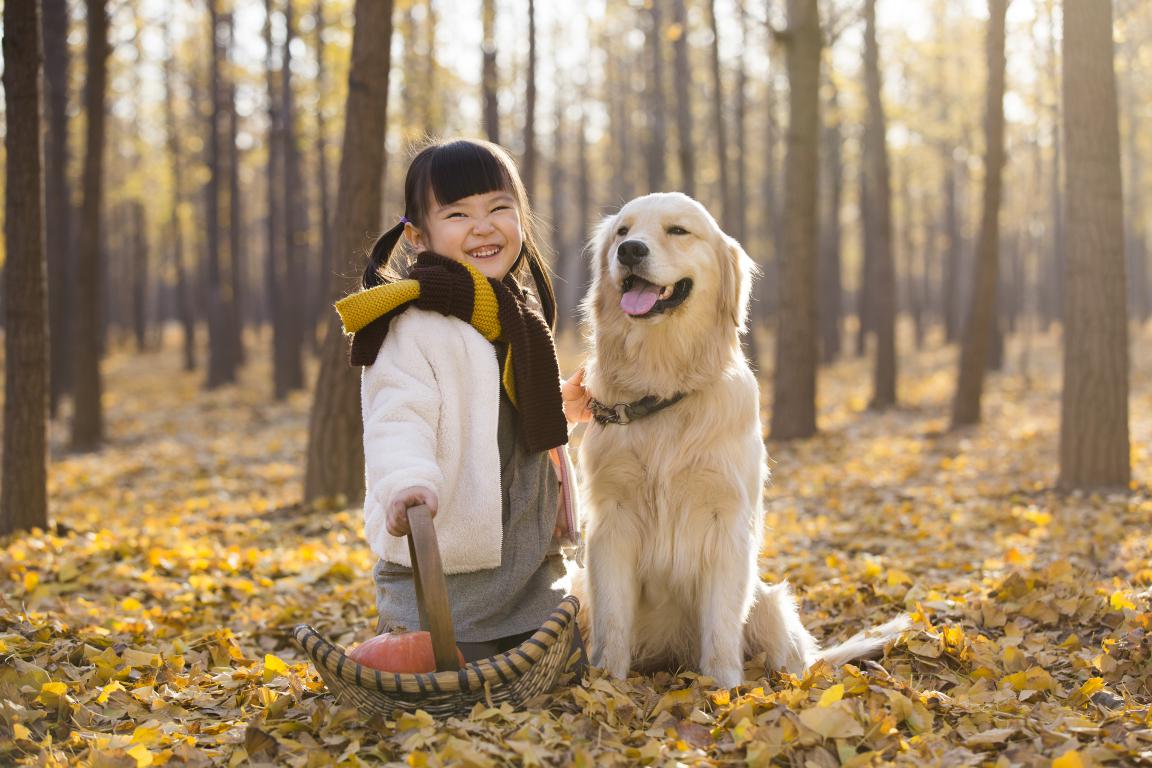
The Waiting List: What to ExpectOnce you’ve successfully navigated the application and assessment stages for an assistance dog for your child, you'll likely find yourself on a waiting list. This phase can be one of the most challenging for families, often filled with a mix of anticipation, hope, and sometimes, frustration. It's important to have a clear understanding of why these waiting lists exist, what factors influence their length, and how you can best manage this period. Why Do Waiting Lists Exist?Assistance dog organisations are not simply providing pets; they are carefully breeding, raising, and intensively training highly skilled working animals. This process is incredibly resource-intensive, requiring significant financial investment, expert staff, and a great deal of time. Here are some key reasons for waiting lists:
Factors Influencing Waiting List LengthThe length of a waiting list is not static and can be influenced by several factors:
It's common for waiting lists to range from 18 months to 3 years, or even longer, depending on the organisation and specific circumstances. Organisations are usually upfront about their typical waiting times, but they will also emphasise that these are estimates, not guarantees. Managing the WaitThe waiting period can feel like an eternity, especially when you know the profound difference an assistance dog could make. Here’s how you can manage this time:
The waiting list is a testament to the quality and dedication involved in providing assistance dogs. While long, it reflects the commitment to ensuring each partnership is safe, successful, and truly life-enhancing. Your patience during this time is part of the journey towards an incredible new chapter for your child. 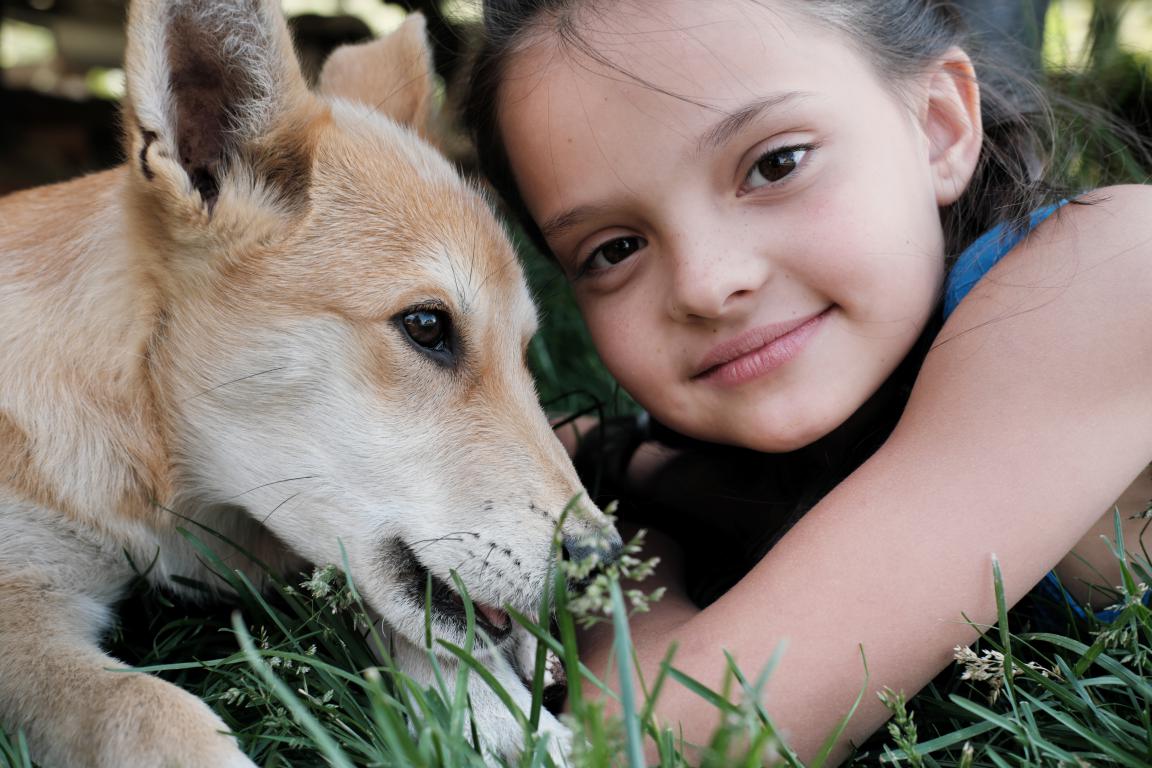
Training an Assistance Dog for a Child: What Does it Involve?The journey of an assistance dog from a playful puppy to a life-changing companion is a testament to meticulous breeding, dedicated socialisation, and highly specialised training. It’s a comprehensive process that ensures the dog is not only capable of performing complex tasks but also possesses the stable temperament required to work reliably in all environments, especially alongside a child. Early Foundations: Breeding and Puppy WalkingThe process often begins before a puppy is even born, with careful consideration given to the breeding lines. Assistance dog organisations selectively breed dogs for health, temperament, and a strong desire to please and work. Labrador Retrievers and Golden Retrievers, or crosses of these breeds, are common choices due to their intelligence, trainability, and generally calm nature. Once born, the puppies spend their first few weeks with their mother and littermates, receiving early socialisation in a stimulating environment. Around 7-8 weeks of age, they are placed with "puppy walkers" or "foster families." This stage, which typically lasts until the dog is around 12-18 months old, is incredibly important. During puppy walking, the dogs learn essential life skills:
The puppy walkers are volunteers who dedicate their time and effort to these young dogs, often attending regular classes and receiving support from the organisation’s instructors. This phase is vital for developing a well-rounded, confident dog ready for specialised training. Advanced Specialised TrainingAfter their puppy walking phase, the dogs return to the assistance dog organisation’s training centre for intensive, advanced training. This stage can last anywhere from six months to a year or more, depending on the individual dog and the complexity of the tasks it needs to learn. During this period, professional trainers build upon the strong foundation laid by the puppy walkers, teaching the dogs specific tasks relevant to the needs of the children they will eventually support. This training is highly individualised, but common areas include:
Trainers use positive reinforcement methods, meaning they reward desired behaviours with treats, praise, or toys. This builds a strong, trusting relationship between the dog and the trainer, making learning enjoyable for the dog. The training is progressive, starting with simple versions of tasks and gradually increasing complexity, often in realistic environments to simulate real-world situations. Health Checks and WelfareThroughout their training, assistance dogs undergo regular, thorough health checks. This includes veterinary examinations, eye tests, hip and elbow scoring, and temperament assessments. Only dogs in peak physical and mental health are able to perform the demanding role of an assistance dog. If a dog develops a health issue or is not happy in its training, it will be "career-changed" and often rehomed as a pet, ensuring its welfare is always prioritised. Team Training: The Final PhaseThe final and arguably most critical stage of training is "team training" – when the specially trained dog is introduced to the child and their family. This is not about the dog learning new tasks, but about the family learning how to effectively communicate with and manage the dog. This stage usually involves:
Team training ensures a smooth transition and a strong, effective partnership. It empowers the family to confidently work with their new companion and fully integrate the assistance dog into their lives. The entire training process is a significant investment, resulting in a highly capable and loving companion for a child in need. 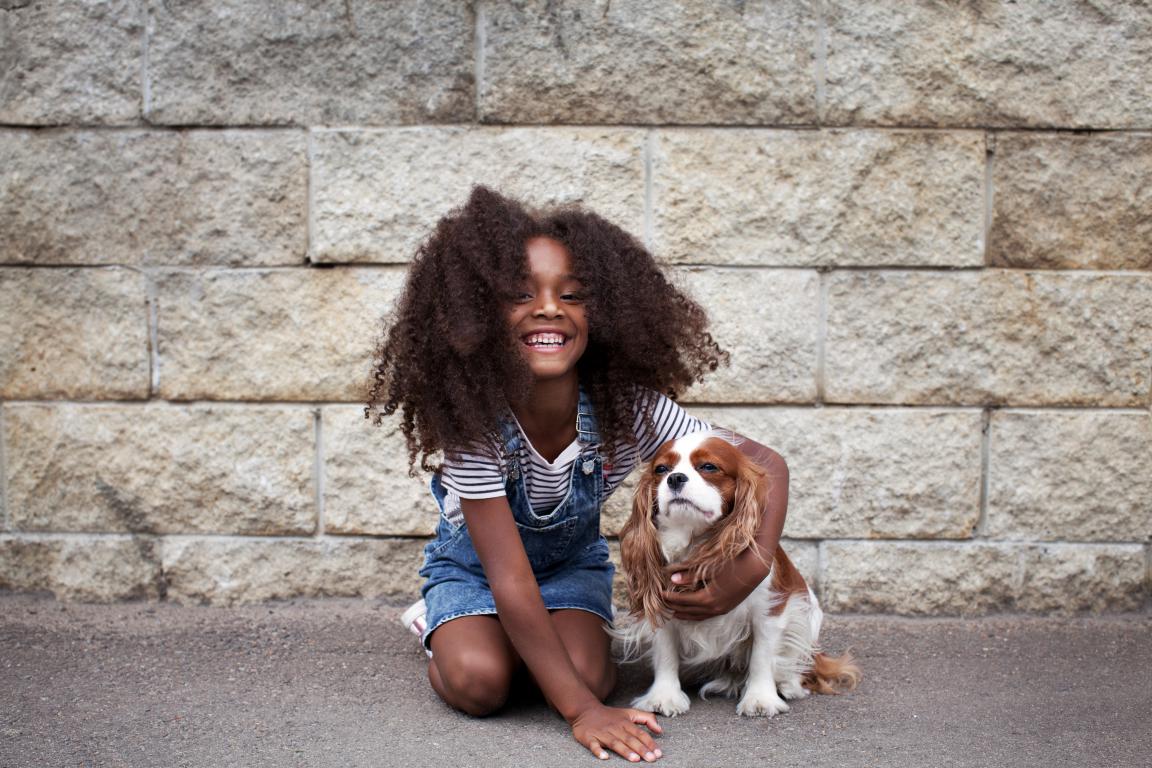
The Costs Involved with an Assistance DogWhen considering an assistance dog for your child, it’s natural to wonder about the financial commitment involved. The good news is that in the UK, the leading assistance dog charities generally provide the dog and its initial training to families free of charge. This is a huge relief for parents, as the true cost of breeding, raising, and training an assistance dog is substantial, running into tens of thousands of pounds. However, while the dog itself is often free, there are ongoing costs and responsibilities that families need to be aware of and prepared for. The True Cost (Covered by Charities)The real financial burden of an assistance dog is immense, and it’s largely borne by the charities through fundraising and donations. This "true cost" includes:
Without these dedicated charities, the dream of an assistance dog would be financially out of reach for most families. Their incredible work makes these partnerships possible. Ongoing Costs for FamiliesWhile the initial provision is free, families do take on the responsibility for the dog's day-to-day care once it is placed with them. These are similar to the costs of owning any dog, but with a working animal, ensuring its health and well-being is even more critical. Here are the main ongoing costs you should anticipate: 1. FoodA working assistance dog needs a high-quality, balanced diet to maintain its health and energy levels. The cost of premium dog food can vary significantly based on the brand, ingredients, and the dog’s size. Expect to spend between £30 to £80 per month, potentially more for larger breeds or specific dietary needs. It's often recommended to stick to the brand of food the dog has been accustomed to during its training, if possible, to maintain digestive health. 2. Veterinary Care (Routine and Unexpected)While charities often cover the initial extensive vet checks, once the dog is placed, routine veterinary care becomes the family's responsibility. This includes:
Many families choose to take out pet insurance for their assistance dog to help mitigate the costs of unexpected veterinary bills. This is highly recommended and can cost anywhere from £20 to £60 per month, depending on the dog's age, breed, and the level of cover. Some assistance dog charities may have partnerships with insurance providers or offer advice on suitable policies. 3. Equipment ReplacementOver time, essential equipment will need replacing. This includes:
While these might not be monthly costs, they represent periodic expenses that need to be budgeted for. 4. GroomingRegular grooming is essential for an assistance dog’s hygiene and comfort, especially for breeds with longer coats. This might involve professional grooming every few months, or the cost of purchasing brushes and shampoos for home grooming. 5. Dog Sitting/Kennelling (if applicable)If your family needs to go away on holiday or has an emergency where the dog cannot accompany you, you will need to arrange for suitable care. This could be a trusted friend or family member, or a professional dog sitter or kennels. Given the specialised nature of an assistance dog, finding appropriate care can sometimes be more challenging than for a pet, and costs will vary. Many assistance dog charities offer advice or even lists of approved carers. 6. Training RefreshersWhile the charity provides ongoing support, sometimes additional training sessions or resources might be needed if specific issues arise or if you want to reinforce certain behaviours. While the main follow-up support is free, sometimes additional private training might be sought by families, which would be an extra cost. Financial Planning and SupportBefore committing to an assistance dog, it’s vital for families to realistically assess their financial capacity to cover these ongoing costs for the dog's working life, which can be 8-10 years. Some assistance dog charities may offer limited financial assistance or advice on budgeting for these costs. It's always a good idea to discuss the expected ongoing expenses with the organisation during the application process so there are no surprises. While there are ongoing financial responsibilities, the invaluable support, independence, and companionship an assistance dog brings often far outweigh these costs for families who are well-prepared and committed to their working dog. The peace of mind and quality of life improvements are often priceless. 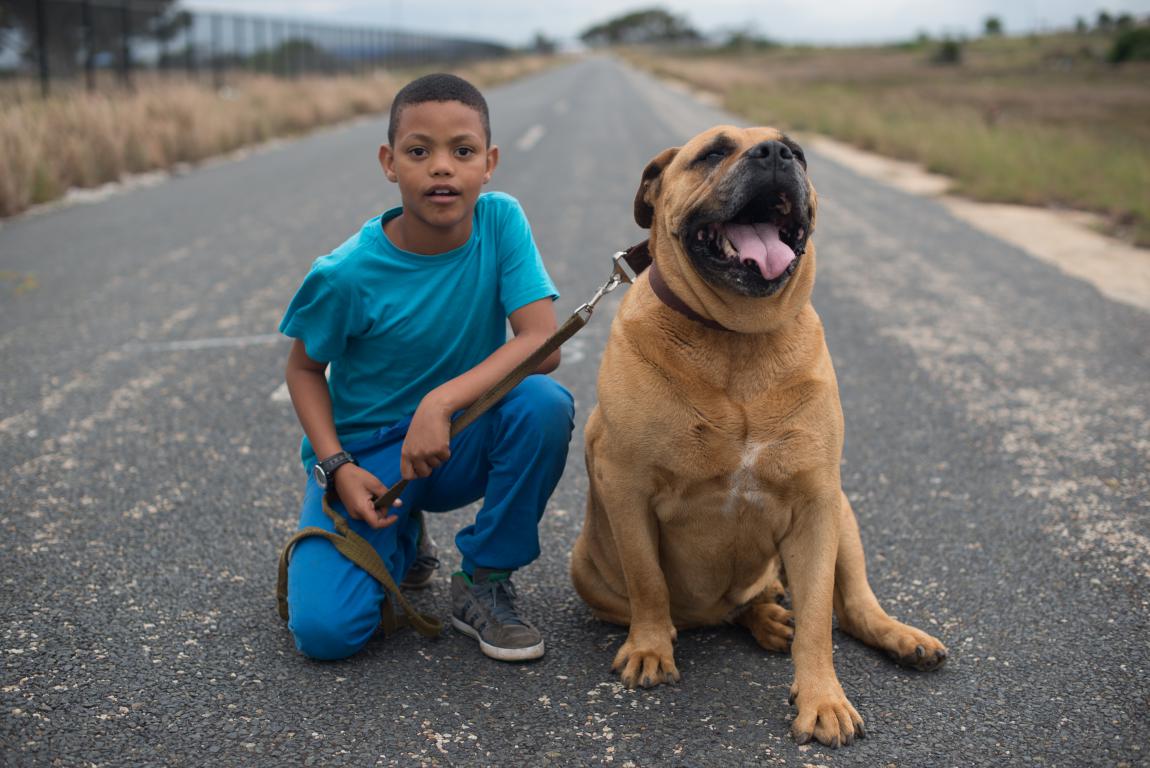
Life with an Assistance Dog: Everyday RealitiesBringing an assistance dog into your family is a truly amazing experience, but it’s also a big change that comes with its own set of day-to-day realities. It’s natural to imagine all the wonderful things that’ll happen, and while those benefits are absolutely real and life-changing, it’s also important to understand the practical side of living with an assistance dog every single day. This section is here to walk you through what life really looks like, covering everything from daily routines and responsibilities to the incredible bond that forms and the little adjustments your family will make. We want to give you a realistic and supportive picture, so you feel totally prepared for this fantastic journey. When you first bring your child's assistance dog home, there’s often a bit of an adjustment period for everyone. It’s not just about the dog settling in; it’s about your child, you as parents, and any other family members learning to live with and interact with this new, very special member of your household. That initial excitement often comes with needing to get new routines established and understanding the dog’s role within your family. This isn't just a pet; it's a working partner for your child, and that difference really shapes lots of aspects of daily life. Getting into New Family RoutinesOne of the first things you’ll notice changing is getting into a routine. Assistance dogs really thrive on knowing what’s coming next, and a consistent daily schedule helps them understand their job and feel secure. This routine will probably include set times for feeding, toilet breaks, exercise, playtime, and specific training or practicing their tasks. While some of this might be similar to what you’d do with any family pet, there’s often a bit more structure needed for an assistance dog to do their best work. For instance, specific toilet times might be super important to stop any accidents, especially when you’re out and about. Exercise isn’t just about letting off steam; it’s about keeping the dog physically and mentally well so they can do their tasks effectively. Consistency helps the dog understand what’s expected of them, which really cuts down on stress for both the dog and your family. This routine also gives a great framework for your child to learn responsibility and develop their handling skills. Sharing the Chores: How Parents Get InvolvedYour child is, of course, the main handler of their assistance dog. But depending on your child’s age, how they understand things, and the specific tasks the dog does, you as parents (or other trusted adults) will play a pretty big part in supervising the partnership and looking after lots of the dog’s daily needs. For younger children, this often means parents are in charge of feeding, grooming, and making sure the dog’s needs are met, all while gently guiding the child in how to interact and give commands. As children get older and grow, they’ll be able to take on more direct responsibility for their dog’s care, which really helps build their independence and confidence. This shared responsibility is a key part of life with an assistance dog; it’s a partnership between child and dog, with the whole family backing them up. Talking openly within the family about who’s responsible for what, especially during busy times or if one parent is away, will be vital to make sure the dog’s needs are always met. Remember, the goal is to empower your child, but always with the understanding that the dog’s welfare and ability to do their job are super important. Looking After Them: Grooming, Health, and FoodLooking after their grooming and health is an ongoing job. Assistance dogs need to be kept clean, well-groomed, and in top physical shape so they can do their duties comfortably and hygienically, especially as they’re often out in public. Regular brushing, baths when needed, nail trims, and cleaning their ears will become part of your routine. On top of this, regular vet check-ups, vaccinations, flea and worming treatments, and a healthy diet are absolutely essential. These aren't just general pet care duties; they’re really important investments in your child’s partner’s ability to do their job effectively and keep working throughout their life. Any health issues can affect the dog’s ability to help your child, so being proactive with their care is vital. Your assistance dog organisation will give you specific advice on all these things, and it’s important to stick to their recommendations, as well as those from your vet. Keeping detailed notes of vet visits, medicines, and what they eat can also be really helpful. Life Out and About: Dealing with People and DistractionsOne of the biggest differences between living with an assistance dog and a pet is their public access rights and the reality of being out in public. While it’s wonderful that your child's dog can go almost everywhere with them, this also means meeting a lot more people and facing potential distractions. You’ll probably find that your family becomes quite a talking point for lots of strangers. People are often curious, mean well, and want to interact with the dog. However, it’s really important for the dog to stay focused on their tasks. You and your child will learn how to gently tell people that the dog is working and shouldn’t be petted or distracted without permission. This can sometimes be a bit tricky, as some people might not understand or respect the "no petting" rule. Coming up with clear, polite phrases to use ("Please don't distract the working dog," or "He's working right now") will become super useful. It’s also important to remember that even the most highly trained assistance dogs are still dogs! They can be affected by loud noises, sudden movements, or tempting smells. Dealing with these distractions when you’re out requires constant attention from you and your child. This isn’t about the dog being naughty; it’s about recognising the complex places they work in. Your assistance dog organisation will have prepared you for these situations and given you ways to handle them, including how to stand up for your child’s rights if access is ever refused (we’ll talk more about this in the next section). Over time, being out in public will become second nature, and you’ll feel much more confident handling these interactions. The Amazing Bond and Emotional SupportBeyond all the practical tasks, one of the most profound realities of life with an assistance dog is the deep, unconditional bond that grows between the dog and your child, and actually, with the whole family. These dogs are specially bred and trained for their temperament, making them incredibly intuitive, patient, and loving companions. For many children, their assistance dog becomes their best friend, a constant source of comfort, reassurance, and emotional stability. This bond can really boost a child's confidence, lessen anxiety, and give them a feeling of security that helps them explore the world more independently. This emotional support isn’t just for the child. Parents often say they feel less anxious themselves, knowing their child has a devoted partner looking out for them. The dog can become a focal point for lovely family interactions, bringing joy and a sense of shared purpose. The quiet presence of an assistance dog can ease feelings of loneliness or isolation that some children with disabilities might experience. It’s a relationship built on trust, mutual respect, and a deep understanding that goes beyond words. Watching this bond bloom is truly one of the most rewarding parts of having an assistance dog in your home. It’s important to nurture this relationship, not just by focusing on the dog’s tasks, but by allowing for playful moments and quiet times of connection. Adjustments for Everyone in the FamilyWhile the main focus is on your child and their dog, the whole family will make adjustments. Other pets in the home will need to learn to get along with the assistance dog, understanding its working role. This integration is usually managed carefully by the assistance dog organisation, but you’ll need to keep an eye on them ongoing. Family outings, holidays, and even simple trips to the shops will now involve planning around the dog’s needs and public access. For instance, finding dog-friendly places to stay when you’re on holiday, or making sure the dog has enough space and water during longer journeys. Siblings, too, will need to understand the assistance dog’s job. It’s common for siblings to be curious and want to interact, but they must learn the boundaries—that the dog is working and isn't just a family pet for them to play with whenever they want. Teaching siblings about how important the dog’s job is and how they can support their brother or sister’s partnership is vital. This can be a wonderful chance for them to learn empathy, responsibility, and how to respect a working animal. Ultimately, while there are practical adjustments and ongoing responsibilities, the overwhelming experience for most families is one of huge positive change. Life with an assistance dog means a life enriched by a loyal companion, more independence for your child, and a unique dynamic that brings deep joy and purpose to the family home. It’s a journey that teaches patience, responsibility, and the incredible power of the bond between humans and animals. 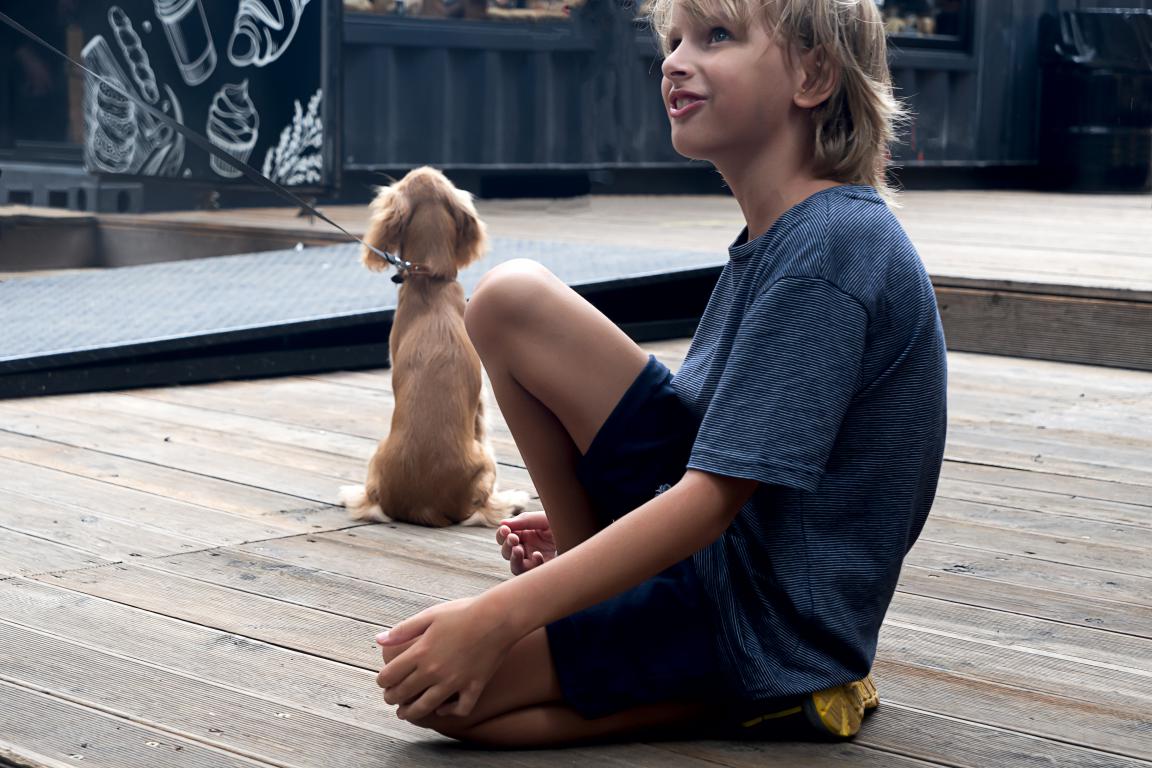
Legal Rights and Public Access for Assistance Dog TeamsUnderstanding the legal rights and public access rules for your child’s assistance dog is absolutely essential. Knowing this information empowers you to stand up for your child and make sure they can go to the same places and use the same services as everyone else. In the UK, the main law that covers assistance dogs is the Equality Act 2010. This Act protects people with disabilities from unfair treatment, and crucially, it includes rules that make sure assistance dog owners aren’t turned away from shops, services, and facilities just because they’re with their working dog. However, knowing the law and confidently using it in real-life situations can sometimes feel a bit daunting. This section will break down the key legal bits, make it clear what to expect regarding public access, and give you advice on how to handle situations where access might be challenged. The Equality Act 2010: Your Child's EntitlementsThe Equality Act 2010 makes it against the law for businesses and service providers to treat disabled people unfairly. This includes saying no to service or access for a disabled person who is with an assistance dog. The Act puts a responsibility on service providers to make “reasonable adjustments” to make sure disabled people aren’t at a big disadvantage. For an assistance dog team, a key reasonable adjustment is allowing the dog into places where regular pets would usually be kept out. This means your child, with their assistance dog, has the right to go into most public places, including shops, restaurants, cafes, hotels, taxis, buses, trains, and medical centres. It’s important to understand that the law applies to “assistance dogs,” which aren’t defined by their breed, but by their training to help a person with their disability. Recognised assistance dog organisations make sure their dogs meet really strict standards for training, health, and behaviour, making them suitable for public access. The dog should be well-behaved, under control, and not pose any health or safety risk. While the law is clear, there are still misunderstandings out there, and you might sometimes come across people or businesses who don’t know their legal duties. What Counts as an "Assistance Dog"?For the Equality Act, an assistance dog is usually described as a dog trained to support someone with a disability. This training is typically given by an organisation that’s a member of Assistance Dogs UK (ADUK), which follows the strict international standards of Assistance Dogs International (ADI) or The International Guide Dog Federation (IGDF). These dogs aren’t pets; they’re highly trained working animals with specific jobs to do. They’re usually easy to spot by a special jacket, harness, or lead slip, and often carry ID that confirms their status as a working assistance dog from a recognised charity. While there isn’t one single official registration for all assistance dogs in the UK, the training and accreditation from these recognised organisations are generally accepted as proof of an assistance dog's status. It’s a good idea to carry ID for your child’s dog, like a handler ID card, which can often make interactions with service providers much smoother. This paperwork helps to quickly confirm the dog’s legitimate working role and your child’s right to have them there. Where Can an Assistance Dog Go? What to Expect in PublicIn most situations, your child’s assistance dog can go anywhere the public is allowed. This includes, but isn’t limited to:
There are very, very few exceptions where an assistance dog might reasonably be turned away. These are usually in really sterile environments (like an operating theatre or certain places where food is prepared) where their presence would genuinely risk hygiene or safety, and where no reasonable adjustment could fix that risk. Even in those cases, the service provider should offer another way for your child to get the service, or safely look after the dog somewhere else. It’s never okay for a service provider to refuse access just because of allergies (unless it's a very specific, rare situation that can’t be reasonably helped) or a general "no dogs" rule. Dealing with Access Problems: What to DoEven with clear laws, you might sometimes find yourself in situations where access is challenged or refused. It can be really frustrating and upsetting, but knowing how to respond calmly and confidently can make a big difference.
Remember, you’re your child’s advocate. Staying firm and polite, while knowing your legal rights, will empower you to make sure your child and their assistance dog can enjoy all aspects of public life without unnecessary hurdles. It also helps to teach others, making things easier for future assistance dog teams. 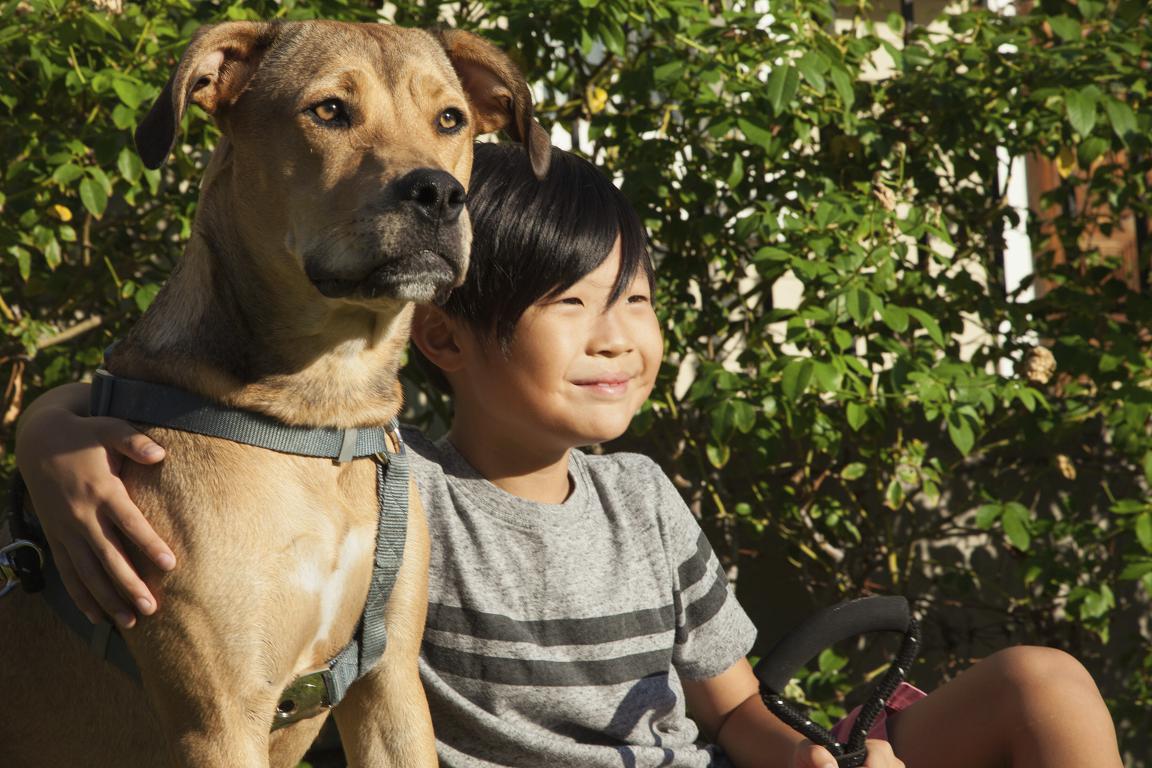
Connecting with the Wider Assistance Dog CommunityStarting this journey with an assistance dog is incredibly rewarding, but it can also bring up unique questions and challenges that only others who’ve been through it can truly understand. Connecting with the wider assistance dog community offers an invaluable network of support, shared experiences, and practical tips. It’s a place where you can celebrate the good times, get help with tricky bits, and feel understood by people who really “get it.” This section will explore the different ways you can connect with other families and individuals involved with assistance dogs, showing you the benefits of building these really important relationships. The Power of Talking to Others in the Same BoatLiving with an assistance dog, especially for a child, brings a distinct set of experiences. While your closest friends and family are undoubtedly supportive, they might not fully grasp the ins and outs of public access challenges, specific training details, or the emotional ups and downs of the partnership. This is where talking to others in the same boat becomes so powerful. Connecting with other parents whose children have assistance dogs means finding people who understand:
This feeling of camaraderie is a really important source of support for many families. It creates a community where everyone is cheering each other on and looking out for one another. Assistance Dog Organisations: Your Main LinkYour child’s assistance dog organisation will be your first and most important link to the wider community. They don’t just provide the dog and the initial training; they often offer ongoing support, resources, and chances to connect with other families.
Keeping a strong relationship with your assistance dog organisation is vital, as they’re a constant source of expert knowledge and community connection throughout the dog’s working life. Social Media and Online ChatsBeyond the official channels of your specific organisation, the internet is home to a lively and extensive network of assistance dog communities.
When you’re engaging with online communities, it’s always a good idea to be a bit cautious. While most groups are incredibly supportive, remember to double-check information, especially about legal stuff or dog health, with your assistance dog organisation or a qualified professional. Groups for Standing Up and Raising AwarenessConnecting with wider disability advocacy groups, even if they don’t just focus on assistance dogs, can also be really helpful. Many of these organisations work to help the public understand disability better and champion the rights of disabled people, including those who rely on assistance dogs.
By connecting with these groups, you not only get support but also contribute to a bigger movement that aims for a more inclusive and understanding society for all disabled individuals and their assistance animals. In short, building connections within the assistance dog community isn’t just a nice extra; it’s an essential part of the journey. It gives you a crucial support system, a wealth of practical knowledge, and a feeling of belonging that can really make the experience better for your child and your whole family. Don't hesitate to reach out and become an active part of this wonderful network. 
Beyond This Guide: Your Next StepsWe really hope this big guide has given you a clear, understanding of what it’s like to bring an assistance dog into your child’s life. Our main aim was to give you all the information and confidence you need to think about this path for your child. But this guide, as detailed as it is, is just the beginning of your journey. The world of assistance dogs is pretty rich and has lots of different angles, with specific laws and practical things to think about that really do need a closer look. To make sure you’ve got absolutely all the information you need, we’ve put together another really important resource that fits perfectly with what you’ve just read. For a truly in-depth understanding of the bigger legal picture and the specific protections that are in place, we really encourage you to read our main information guide: What You Need To Know About Assistance Dogs and The Equality Act 2010. This guide dives into:
This part of your research is super important because it will give you a solid understanding of the laws and rights for Assistance Dogs, so you'll know exactly what to expect.
© 2024 The Card Project Uk Ltd
VAT: 453 2087 06
|